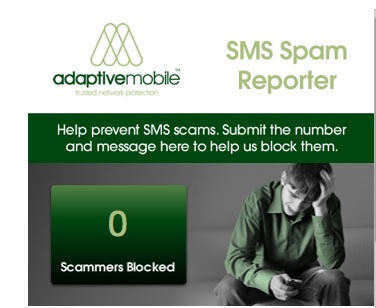A survey of 1,000 UK mobile users has suggested that 148.3 million spam texts are received by UK consumers per month, leading to potential fraud and loss of personal data for users and damaging consequences for operators.
The YouGov research found that 29% of respondents said that they would consider churning operator if they were exposed to more than 10 spam messages per month. The bad news for operators is that one in eight of those respondents who receive more than one message per month say they are already receiving those levels.
“There is clear concern that unless SMS spam is eradicated, operators will experience significant churn,” Ciaran Bradley, VP Handset Security, AdaptiveMobile, said,
So are operators doing enough to protect users against spam?
Bradley said that a typical major Western European operator would have a variety of systems deployed, from detection and monitoring systems to setting up reporting services for users. But clearly spam is still getting through in large numbers, if the YouGov numbers are correct.
One issue is that large numbers of SIMs are much easier and cheaper to get hold of than in the past, and it is economically viable for spammers to inject large numbers of messages into a network from banks of SIMs. In the past, injecting messages onto the network required signalling level know-how, according to Bradley.
Another issue is that spammers are mobile and will quickly move on to a new country if they sense their effectiveness is being compromised. For example, Adaptive has seen a “You have won a prize” campaign that falsely redirects users to an auction site pop up in Australia, Ireland, Denmark, Switzerland, The Netherlands and elsewhere in quick succession.
This means that although there are tools that can look for SIMs that are sending bulk amounts of messages, scan content for phrases and calls to action and then block those senders, they are always, to some extent, playing catch-up.
A further factor is that people don’t always know what to do when the receive a spam message. Texting “STOP”, which many of the campaigns suggest, instead just confirms to the sender that they have hit an active account, and often results in more spam.
A critical factor for the industry is knowing where and when spam is occurring, so they can take action. That relies on efficient user reporting. Bradley argues that instead of relying on users to remember and use a shortcode reporting service, operators could piggyback on users’ existing presence on social networks. Adaptive has developed a Facebook app that lets a user enter the originating number of a text, plus the message text, and report the message. Operators could offer the app as a whitelabel Facebook app, it said. Reports go into Adaptive’s Intelligence Centre, which can be shared with other operator customers, with analytics and reports on who’s sending what, and patterns to look out for.
The GSMA has developed a Spam Reporting Service with Cloudmark as its technology provider, but Bradley sees Adapative’s approach as complementary.
“It [GSMA SRS] is of some use, and to the industry as a whole it is good that people can report by whatever method they can; it’s good for operators to share information.This Facebook approach is another way to do to it.”



